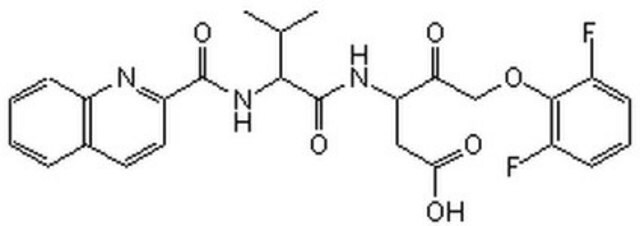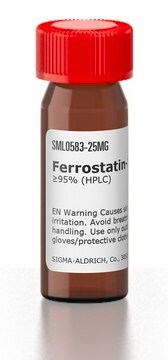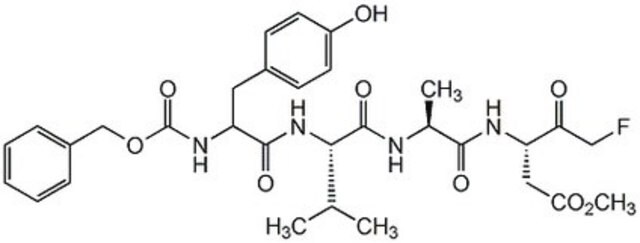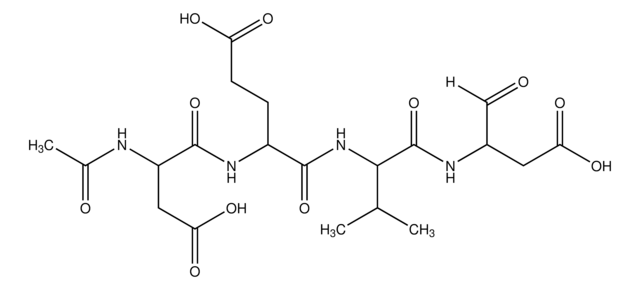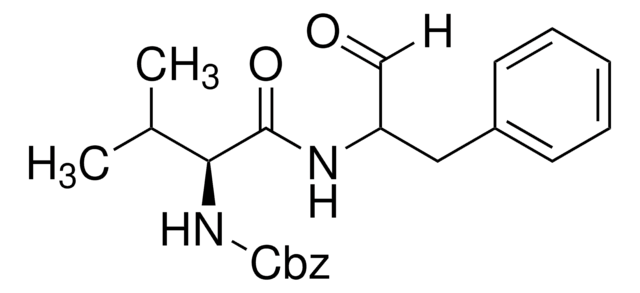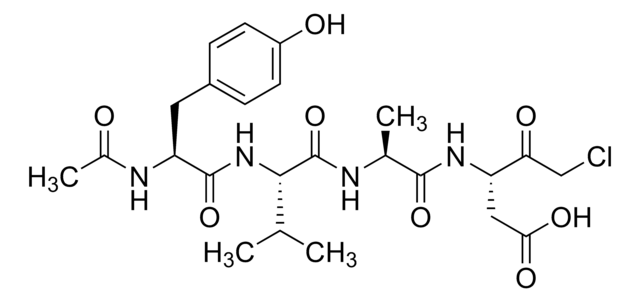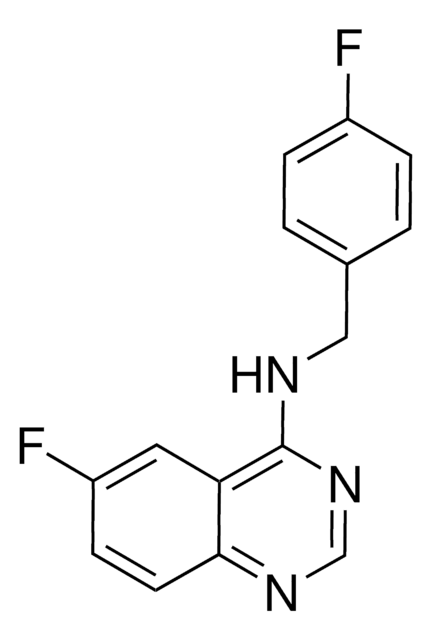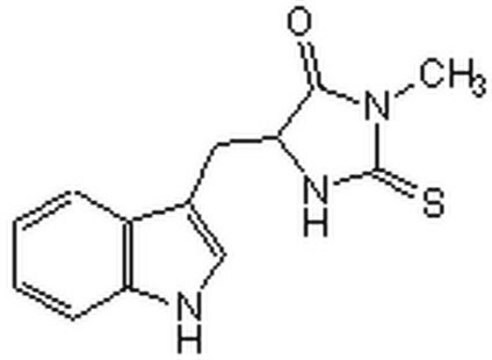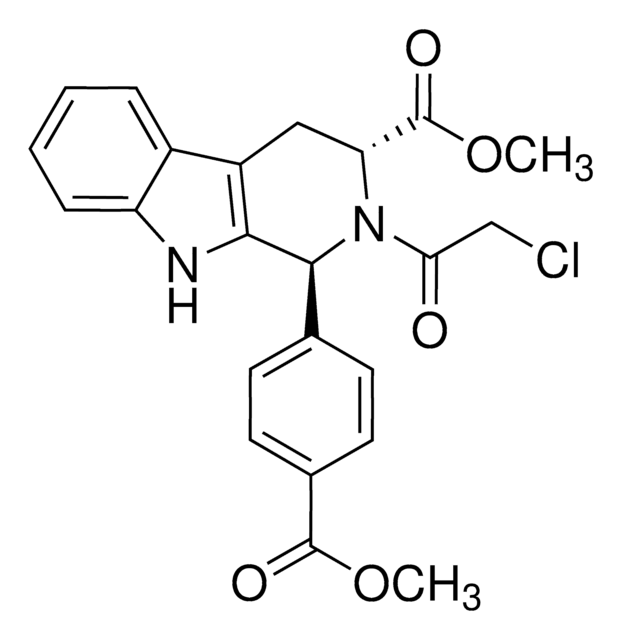SML0063
Q-VD-OPh hydrate
≥95% (HPLC), powder, pan-caspase inhibitor
동의어(들):
5-(2,6-Difluorophenoxy)-3-[[3-methyl-1-oxo-2-[(2-quinolinylcarbonyl)amino]butyl]amino]-4-oxo-pentanoic acid hydrate
About This Item
추천 제품
product name
Q-VD-OPh hydrate, ≥95% (HPLC)
Quality Level
분석
≥95% (HPLC)
형태
powder
저장 조건
desiccated
색상
white to light brown
solubility
DMSO: ≥14 mg/mL
배송 상태
wet ice
저장 온도
−20°C
SMILES string
O=C(NC(C(C)C)C(NC(C(COC1=C(F)C=CC=C1F)=O)CC(O)=O)=O)C2=NC3=CC=CC=C3C=C2.[H]O[H]
InChI
1S/C26H25F2N3O6.H2O/c1-14(2)23(31-25(35)19-11-10-15-6-3-4-9-18(15)29-19)26(36)30-20(12-22(33)34)21(32)13-37-24-16(27)7-5-8-17(24)28;/h3-11,14,20,23H,12-13H2,1-2H3,(H,30,36)(H,31,35)(H,33,34);1H2/t20-,23-;/m0./s1
InChI key
ONOTWLLTFZMERH-WCRWPNQISA-N
애플리케이션
- as a pan-caspase inhibitor to prevent cell death in urothelial carcinoma cells (UCC)
- to induce canonical caspase-dependent apoptosis in UC cells
- to block caspase-3 and Poly (ADP-ribose) polymerase-1 (PARP-1)
- to study the protective role of EspZ effector protein against apoptosis and necrosis in human epithelial cells
생화학적/생리학적 작용
특징 및 장점
Storage Class Code
11 - Combustible Solids
WGK
WGK 3
Flash Point (°F)
Not applicable
Flash Point (°C)
Not applicable
시험 성적서(COA)
제품의 로트/배치 번호를 입력하여 시험 성적서(COA)을 검색하십시오. 로트 및 배치 번호는 제품 라벨에 있는 ‘로트’ 또는 ‘배치’라는 용어 뒤에서 찾을 수 있습니다.
이미 열람한 고객
문서
We offers many products related to caspases for your research needs.
관련 콘텐츠
n proliferating cells, the cell cycle consists of four phases. Gap 1 (G1) is the interval between mitosis and DNA replication that is characterized by cell growth. Replication of DNA occurs during the synthesis (S) phase, which is followed by a second gap phase (G2) during which growth and preparation for cell division occurs. Together, these three stages comprise the interphase phase of the cell cycle. Interphase is followed by the mitotic (M) phase.
Apoptosis, or programmed cell death (PCD), is a selective process for the removal of unnecessary, infected or transformed cells in various biological systems. As it plays a role in the homeostasis of multicellular organisms, apoptosis is tightly regulated through two principal pathways by a number of regulatory and effector molecules.
자사의 과학자팀은 생명 과학, 재료 과학, 화학 합성, 크로마토그래피, 분석 및 기타 많은 영역을 포함한 모든 과학 분야에 경험이 있습니다..
고객지원팀으로 연락바랍니다.
